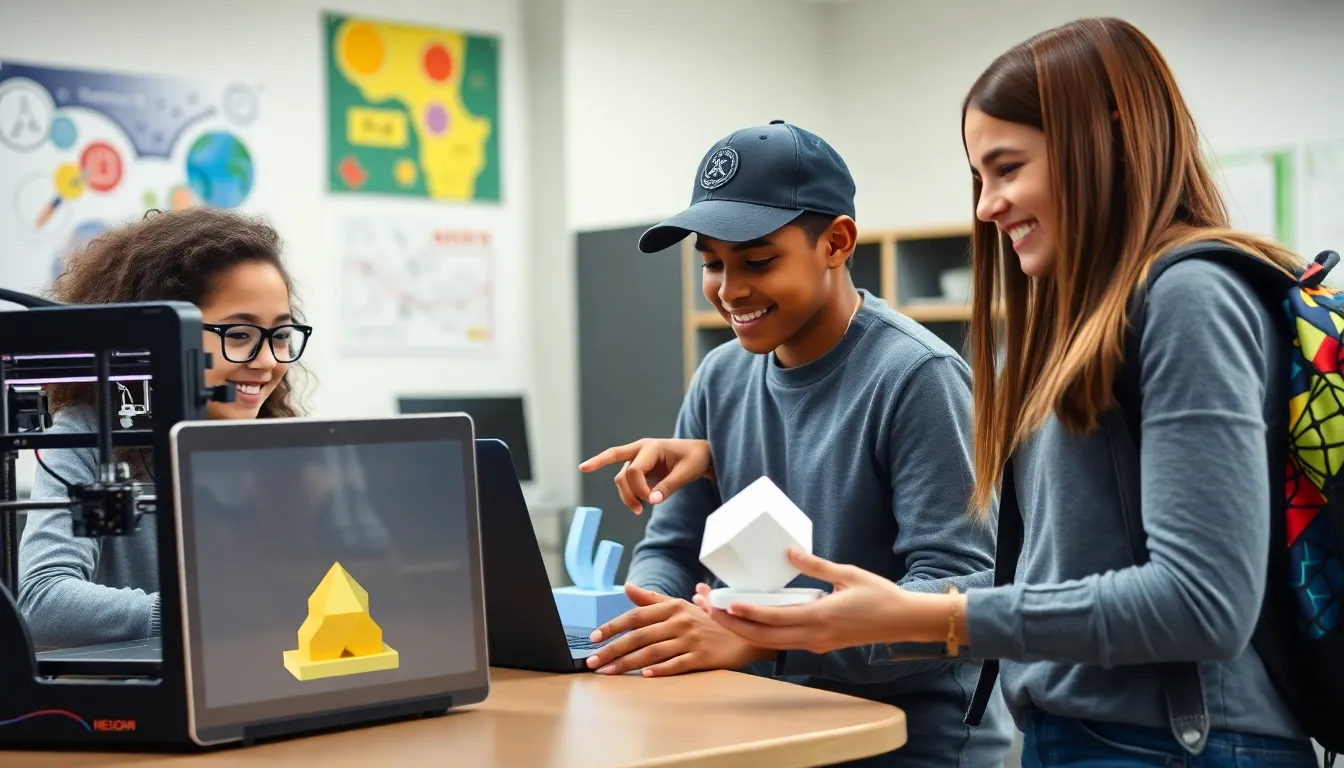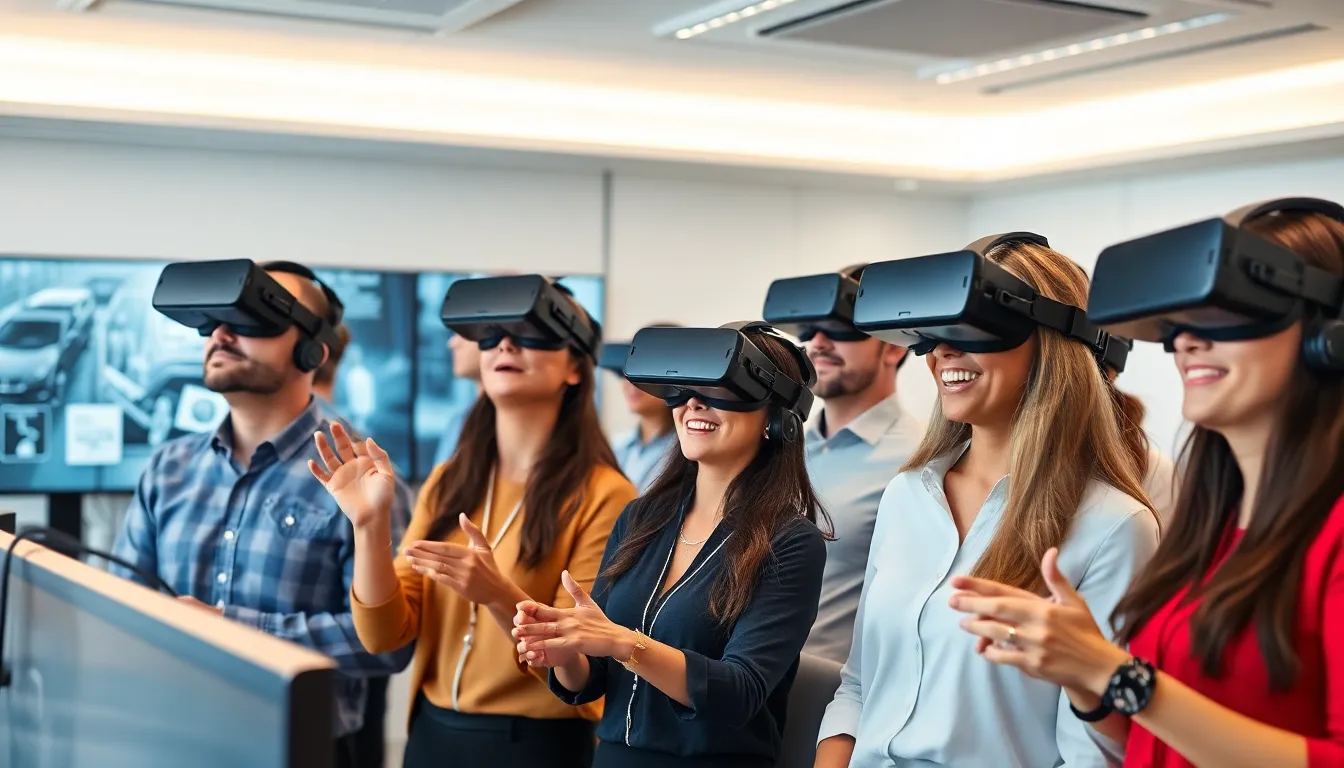Imagine a world where kids can explore the depths of the ocean, soar through the skies, or even trek through ancient civilizations—all from their living room. Virtual reality (VR) isn’t just for gamers anymore; it’s transforming playtime into an extraordinary adventure. With VR for kids, the possibilities are endless and the excitement is palpable.
But before you think it’s all fun and games, let’s not forget the educational perks. VR can enhance learning in a way textbooks just can’t compete with. So while your child is busy battling dragons or solving mysteries, they’re also picking up valuable skills. It’s like sneaking veggies into their favorite pizza—fun and nutritious! Dive into the world of VR for kids and discover how it can turn ordinary moments into extraordinary experiences.
Table of Contents
ToggleOverview of VR Technologies
Virtual reality (VR) encompasses diverse technologies allowing users to immerse themselves in digital environments. Headsets, such as Oculus Quest 2 and HTC Vive, provide rich visual experiences. Controllers enable interaction with virtual objects, enhancing engagement.
Mobile VR options, like Samsung Gear VR, utilize smartphones to deliver experiences at a lower cost. These systems often provide an accessible entry point for younger audiences, expanding the reach of VR technology.
Software platforms, such as Oculus Store and Steam VR, offer a variety of educational and entertaining content for children. Games that teach coding concepts or simulations of space exploration enhance learning through play.
Motion tracking technology plays a critical role in VR systems, enabling natural movement within virtual spaces. This aspect allows children to engage in physical activities, promoting fitness alongside entertainment.
Safety features remain vital in VR setups for children. Parental controls and age restrictions ensure appropriate content exposure. As VR continues to evolve, it presents unique opportunities for educational development and creative exploration.
Research indicates that VR can improve cognitive skills, such as spatial awareness and problem-solving. These advantages align with contemporary educational goals, making VR a valuable tool in modern learning environments. With its expanding availability and resources, VR remains an exciting frontier for enriching children’s experiences through immersive learning.
Benefits of VR for Kids
VR offers numerous advantages for children, enhancing their learning, creativity, and overall growth.
Enhancing Learning Experiences
VR transforms traditional education by immersing kids in interactive environments. Engaging with simulations of historical events or scientific phenomena captures their interest and deepens understanding. For instance, exploring the solar system can become a captivating journey, making STEM subjects more appealing. Research shows that VR can boost retention rates, with students recalling information better through experiential learning. By allowing children to visualize complex concepts, VR supports diverse learning styles, catering to visual and kinesthetic learners. As they navigate these simulations, kids develop critical cognitive skills essential for academic success.
Promoting Creativity and Imagination
VR acts as a powerful tool for sparking creativity among children. Immersive worlds encourage them to invent stories, design characters, and build virtual environments. While interacting within these realms, kids express themselves and experiment without real-world limits. Games that focus on building and creation enhance problem-solving abilities, urging children to think innovatively. In collaborative settings, they can brainstorm and work with peers, fostering teamwork and communication skills. As they craft their narratives and alternate realities, students become more engaged and develop a personalized creative voice.
Safety Considerations
Safety is paramount when introducing virtual reality to children. Ensuring their protection from potential risks enhances the overall experience.
Age Appropriateness
Age appropriateness influences the selection of VR content. VR experiences designed specifically for younger audiences address cognitive and emotional maturity levels. Platforms like Oculus Store and Steam VR offer filters for age ratings, making it easier for parents to find suitable materials. Games labeled for kids often focus on educational themes that engage without overwhelming. Additionally, developers may incorporate softer graphics and simplified controls to match children’s developmental needs. Ensuring kids engage with age-appropriate content promotes both enjoyment and safety.
Managing Screen Time
Managing screen time plays a crucial role in maintaining health while using VR. The American Academy of Pediatrics recommends limiting recreational screen time for children. Implementing a schedule or setting reminders can encourage breaks during VR sessions. Regular pauses help prevent issues like eye strain and motion sickness, enhancing the experience. Parents should also promote balanced activities that include outdoor play and offline hobbies. Open discussions about proper usage establish healthy boundaries and foster responsibility. By monitoring and regulating screen time, parents can ensure kids benefit from VR without negative consequences.
Popular VR Games and Applications for Kids
Virtual reality offers an array of games and applications specifically designed for kids. These experiences maximize both fun and learning, ensuring children engage while developing essential skills.
Educational Games
Games designed for education capture children’s attention through immersive engagement. Titles like “Kerbal Space Program” teach physics and space exploration concepts, allowing kids to build and launch spacecraft. “CodeCombat” introduces coding through interactive gameplay, promoting programming skills in a fun way. Software such as “Google Earth VR” offers global learning experiences, giving kids the ability to explore different cultures and geographical features. Many educational games adapt to various age groups, ensuring appropriate content for younger and older users alike.
Creative and Interactive Experiences
Interactive experiences spark children’s creativity and imagination in unique ways. Games like “Tilt Brush” let kids create 3D artwork in a virtual space, combining technology with artistic expression. “Minecraft VR” encourages building and storytelling, providing open-ended play that fosters problem-solving and teamwork. Platforms such as “VRChat” allow kids to socialize and express themselves in dynamic environments, strengthening social skills. Each application promotes creativity, ensuring children think innovatively while enjoying immersive interactions.
Future of VR for Kids
Emerging trends in VR for kids showcase remarkable potential for enhancing educational experiences. Virtual reality caters to diverse learning styles by offering interactive environments that make subjects more appealing. Studies show students demonstrate higher retention rates when engaging with VR content.
Innovative technologies continuously improve the accessibility of VR for younger audiences. New models like Meta Quest 3 provide enhanced graphics and immersive experiences that captivate children’s attention. Developers focus on creating age-appropriate content that sparks interest in learning.
Safety concerns remain a priority as the VR landscape evolves. Parental controls and robust age restrictions help ensure children’s experiences are both safe and enjoyable. Development teams frequently update these features based on feedback from parents and educators.
Popular applications demonstrate how VR can nurture creativity. Games like “Rec Room” and “Little Big Planet VR” allow kids to collaborate on creative projects while developing social skills. Educational platforms, such as “zSpace,” reinforce STEM subjects through engaging, hands-on experiences.
The integration of VR in school curriculums is gaining momentum. Educators increasingly recognize VR’s power to transform traditional lessons into interactive adventures. Institutions that adopt VR face the opportunity to engage students in ways previously unimaginable.
As advancements continue, the future looks bright for VR in children’s education. The immersive technology promises to redefine how kids learn and play while opening new pathways for exploration. Flexibility to adapt content ensures VR can meet evolving educational needs.
Virtual reality is revolutionizing the way children learn and play. By offering immersive experiences that blend education with entertainment, VR captures children’s imaginations while enhancing their cognitive skills. With a wide range of engaging content and advanced technologies, kids can explore new worlds and develop critical thinking abilities.
As VR continues to evolve, its integration into educational settings promises to create interactive learning environments that cater to diverse learning styles. Parents can feel confident in the benefits of VR when they prioritize safety and manage screen time effectively. The future of VR for kids is not just about fun; it’s about fostering creativity and curiosity in an ever-changing digital landscape.






